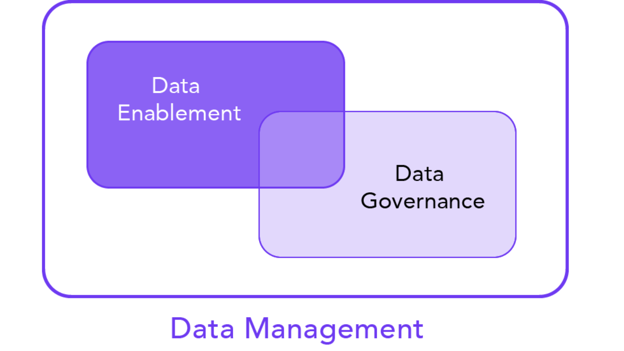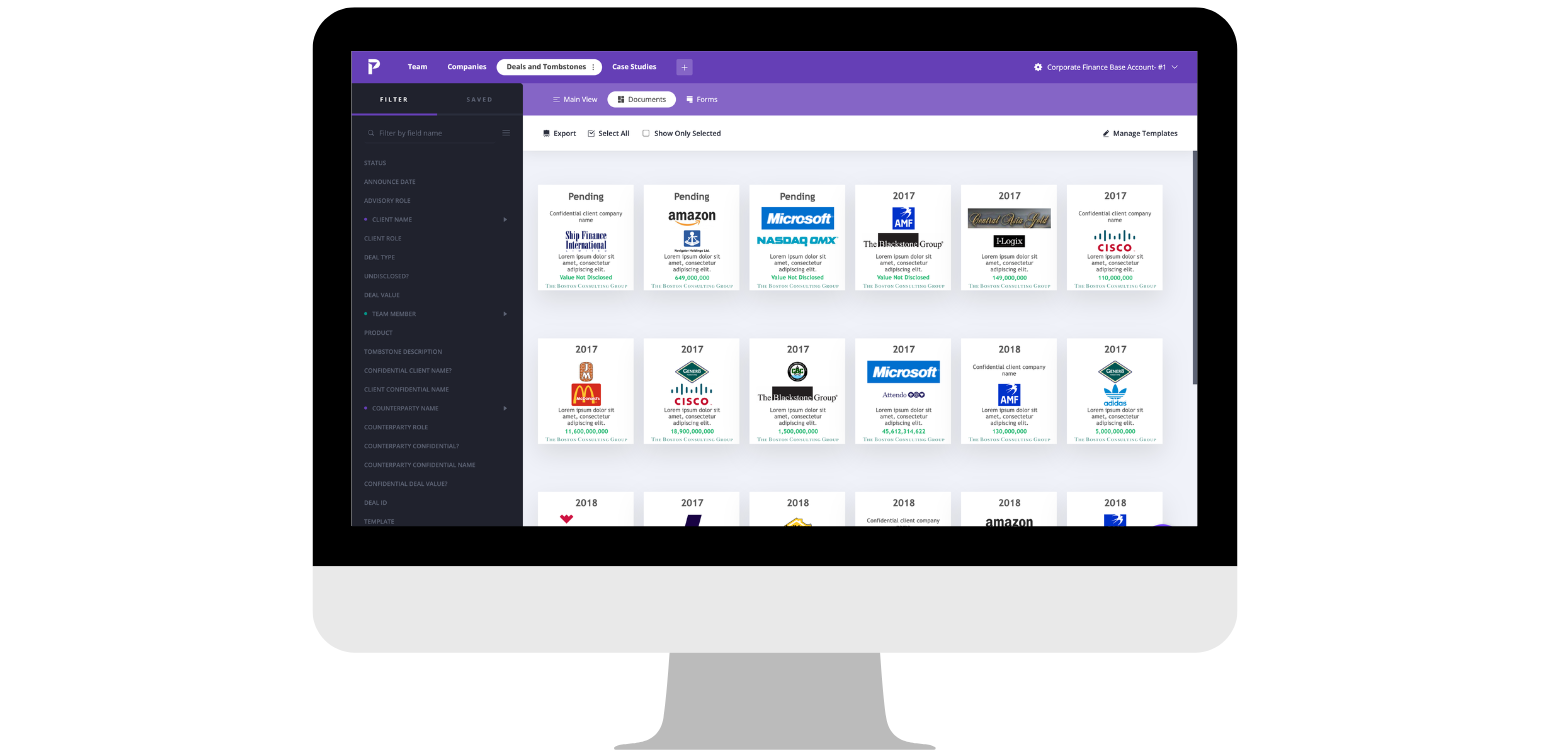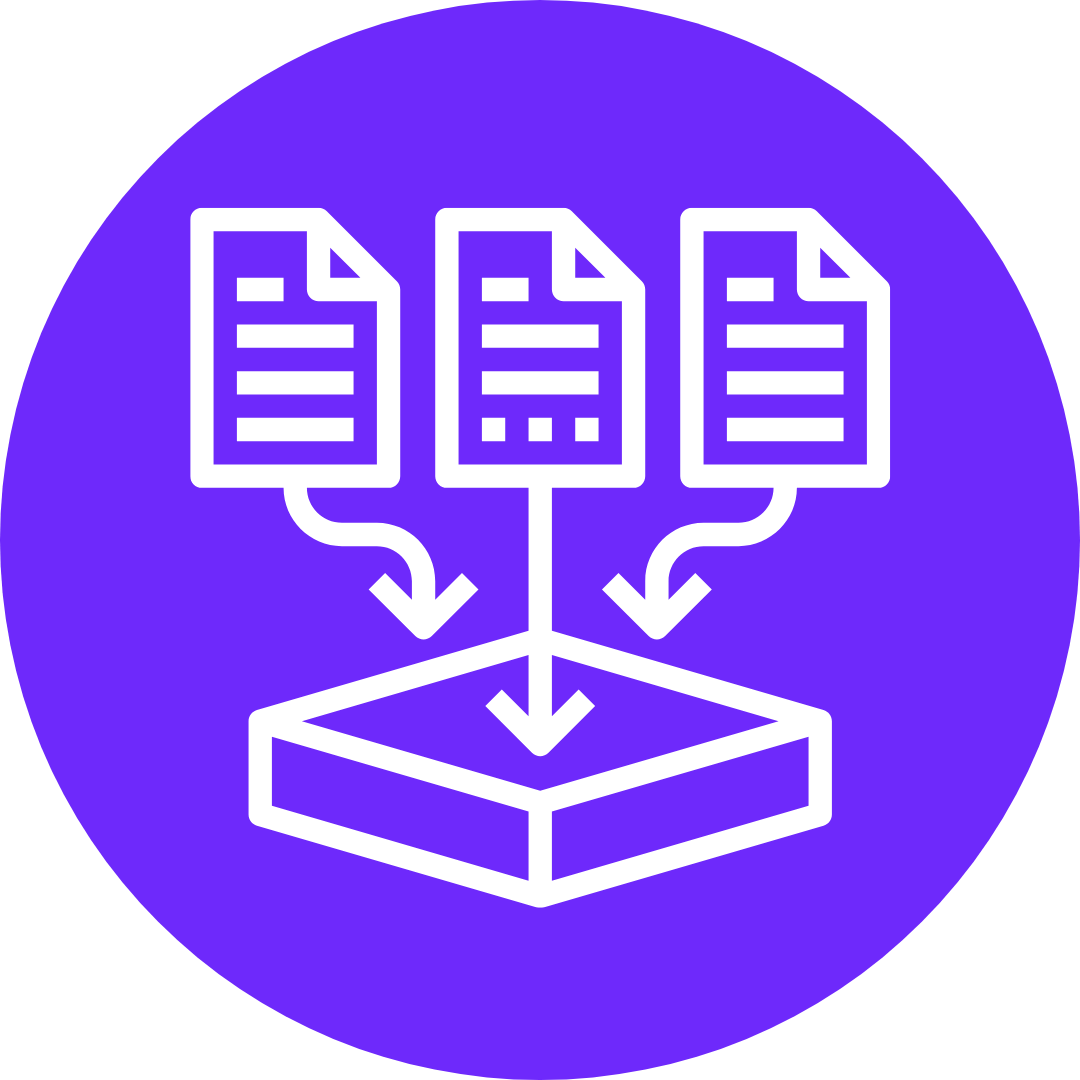Data Enablement 101
How to put your data to work & why it matters
Data enablement is a phrase that’s been generating considerable interest recently. It’s been touted by several large business strategy firms as one of the most important strategies for business growth. PwC even went as far to say that it’s “your new superpower.” However, companies are still struggling to get their data organized – and it’s no wonder. In 2021 Statistia shared that the average organization now uses an astounding 110 SaaS apps. Without data enablement strategies in place, organizations are at risk of compromising their security, longevity, ability to scale, and overall competitiveness.
But in a time when “data-driven” seems to be the biggest buzzword out there, what is data enablement, exactly? And what makes it so crucial to your growth strategy?
What is Data Enablement?
In short, data enablement is all about making the most out of the data you have. This involves making it actionable, accessible and flexible. To establish a benchmark let’s review a couple of definitions:
“Data enablement is the practice of empowering business entities with the right tools and technologies to drive maximum leverage from data to achieve business objectives.”
“Data enablement is the practice of empowering individuals in a business with the support and tools they need to responsibly leverage trusted data to achieve real business outcomes.”
The common threads between these definitions are: that you’re connecting people to the data they need and that this has a direct impact on your business outcomes. These are the core tenets of this discipline.
When your data is enabled, it is structured in a way that makes it easy for people to access the data they need, across teams, departments and business units. This structure can come from a variety of rules and policies based on internal needs. The process of structuring your data to enable it involves consistently centralizing, validating, and classifying your data.
One of the major requirements underlying data enablement is real-time updates when changes in your data have occurred. This is where the need for automation often surfaces. Keeping your data catalog up-to-date ensures that self-service data access is always available and accurate. Not only will employees have access to everything they need, but they can be confident that they can pull the freshest data at all times.
Data Enablement vs. Data Management & Data Governance
Some may be tempted to use these three terms interchangeably: Understandably, because they’re all ultimately about wrangling your data and making it work for your organization. However, there are several key differences.

Let’s look at three definitions side-by-side:
Data Enablement
Data Governance
Data Management
Data management is the overall practice of storing and making use of your data. It’s much broader, while data enablement and data governance have very specific desired outcomes.
Data enablement and governance may see similar on the surface, but they are very different in practice. Both disciplines concern access to data, but governance is more about making decisions on compliance and access, as well as the technical considerations. Enablement can sometimes be seen as an extension this discipline that brings in a more strategic perspective. But it is also a distinct consideration. Enablement ensures that everyone who should have access to data does in an easy, timely, and efficient manner, and that the culture of data is created.
In short, data enablement is a strategic discipline that can assist with the execution of data governance policies, and both of these disciplines function under the whole umbrella of data management.
Now that we’ve got some clarity about what exactly data enablement is, let’s dive into why it’s such a crucial consideration for all firms that deal with data.
Why Data Enablement is Crucial for Success
Gartner names the struggle to deliver tangible business value out of data-driven programs as one of the biggest challenges that data leaders face today. Without data enablement, driving that value from data is a nearly impossible task.
Data is one of the most valuable assets in any organization. There is seemingly endless opportunity to take full advantage of the data you already have. This is why the phrase “data-driven organizations” is getting more and more popular. Data gives firms a major advantage when it comes to business growth, leading innovation, and gaining a competitive advantage in the market.
And from a pragmatic perspective, it is easy to identify that data is expensive. So, at best, you are wasting valuable assets - money, time, and people resources - if you haven’t invested in data enablement. Despite how much data you have in your collection, it’s of no value if you can’t put it to work.
The Risks of Not Enabling Your Data
So how exactly does a lack of data enablement prevent organizations from creating data-driven value? It comes down to a few key consequences.
Inconsistency & Errors
According to a new study by Experian, 65% of companies say that inaccurate data is the main issue undermining key initiatives. Although these inaccuracies can be caused by a variety of factors, a lack of data enablement is likely a major culprit.
If your data is being handed off from database to database or department to department without a clearly defined process, issues can arise. The data can amass errors along the way, incomplete datasets may be entered, and there are plenty of opportunities for data to be misinterpreted or misrepresented.
All of these flaws make it infinitely more difficult to extract value out of your data.
Strategy Silos
From that same Experian study, researchers found that 69% of companies claim that data management initiatives are only happening within individual departments. Only a handful of these initiatives extend company-wide.
Not only does this disconnect between departments exacerbate the aforementioned accuracy issue, but having data in silos also makes for inefficiencies in department strategies.
When you don’t have a reliable way of connecting all the data systems at your disposal, it can leave some teams in the dark. One team may have identified a data use that’s extremely valuable to them - and is likely useful to other teams - but the silos prevent this synergy from being created. Every team is left to “fend for themselves” when it comes to finding the data resources they need.
Without data enablement, the data catalog that each department owns appears to be just random lists of credentials, rather than the blueprint for intuitive action plans that can be executed across departments.
The impact of these siloes is tangible. It can lead to duplicated efforts, incongruent data points, a wrongly perceived shortage of resources, and a lack of alignment on company initiatives.
Wasted Time
This is perhaps the downside to not enabling your data that is felt most acutely in organizations. Un-enabled data is tedious, time-consuming, and difficult to sift through.
Without data enablement strategies that deliver data in a streamlined and intuitive manner, teams need to dedicate an abundance of time and resources to tedious and repetitive tasks.
These tasks, such as tombstone design and pitch deck creation, though valuable assets to the team, are ultimately not what’s going to set you apart from the competition.
Skilled team members, who were hired for their ability to dig into effective strategy work, are instead left spending hours each week on these data assembly tasks. Every hour spent this way is another hour that they are not being used to the best of their abilities.
This misuse of time also risks your employees’ overall satisfaction and fulfillment at work. When they have to dedicate large amounts of time to these repetitive tasks, their engagement decreases because they don’t feel as free to contribute to creative and strategic projects.
There is a huge risk to be had by not investing some time and resources into data enablement. While one of these on its own may be an inconvenience, all of these drawbacks together can put your organization in serious jeopardy.
The Opportunities Related to Data Enablement
On the flip side, if you do invest, not only are you able to beat the competition, but you’ll likely uncover several additional benefits.
Let’s first talk about the opportunity in overcoming the aforementioned risks:
More time to spend on strategy work
When your data is enabled, it’s easy for everyone to access the data they need in the way that works for them.
Take tombstones for example. Although tombstones showing off the relevant work you’ve done are a highly valuable asset for all professional services firms, their creation comes with a lot of tedious work.
With the right data enablement tools, you can automate the repetitive aspects of this process. An easily filterable database that feeds into pre-designed templates makes this a snap for employees to create. This gives them the tools that they need to get their job done, with the extra time they need to strategize and come up with innovative solutions.
Innovation in one place leads to innovation everywhere
Since data enablement breaks down your silos, when one team uncovers a solution or innovation, it’s easy to scale it to the rest of the organization.
When all teams are working off of a central database - but with a flexible, curated experience based on their needs - it becomes intuitive for that communication to happen. The distinct cultures between each department begin to blend, and a culture of collaboration begins to arise.
Across teams, you can leverage victories and capabilities, and put your heads together to address issues or inefficiencies that pop up.
Risk Avoidance
One incredible benefit is that since the data is all normalized, there is no ambiguity about where data goes and what it means. Enabled data is accessible in a way that immediately contextualizes its use.
This means that if one person goes on vacation or leaves the organization, teams don’t need to scramble to understand what all these random data points mean. The structure will already be in place, making it easy to hand off data wherever it’s needed.
Scalability
Although your data may be manageable now, as your organization grows, so too will the amount of data and the number of data sources.. Putting data enablement strategies in place now - even if your organization is currently small - will set you up for success no matter how much your data expands.
Data enablement gives you a process for managing any amount of data. With the right tools, you will be able to take full advantage of your data, with little or no extra effort.
A Better Understanding of the Climate Around You
When your data is consolidated, uniform, and arranged in a way that’s easier to understand, it’s much simpler to see the full picture.
Organizations that enable their data can identify rising trends, potential opportunities for growth, and steps in their operations that can be made more efficient.
Your data has always been used to inform this bigger picture. Data enablement simply gives you the tools and the strategies to reveal it and monitor it as it evolves.
How to Enable Your Data
The most important thing to keep in mind when deciding to invest in data enablement is that it is not a one-off project or a quick-fix initiative. It is a flexible and scalable discipline that requires a shift in your organizational thinking and processes. It will change the way you approach data and the way that you collaborate across teams.
Another concept to keep in mind is that data enablement is holistic. This is not an investment that will deliver results if it’s only adopted by a key number of teams or team members. It spans departments, and it spans disciplines.
So let’s take a look at some of the best strategies to jumpstart data enablement at your organization.
Training
On any team, there will be a wide range of savviness with data and technology. Your first line of defense should be leveling out any knowledge gaps to the best of your ability.
When your organization adopts a new tool to enable your data, take the time to train each team on how to use that tool, and how the tool will fit into the organization as a whole.
Don’t assume that everyone will naturally grasp every tool automatically. You’ll need to provide checkpoints to test their understanding. Training should be a continuous process, rather than a one-time meeting or course. While the initial training is crucial, making training assets and recordings available to reference later on, as well as offering ongoing, iterative training, will ensure that data enablement strategies stick.
And when you find power users, leverage their knowledge to share best practices with the rest of the team. Creating an open forum for users of all skill levels to ask questions and share knowledge will make the adoption of new tools much more effective.
This investment in training will empower every person on your team to make the most out of the data enablement tools in your stack and will ensure that no one will fail to utilize these tools for lack of knowledge.
Culture
Once your team understands how your data processes work, it’s important to instill the why in them. And the best way to do this is by creating a strong data culture.
If you’re serious about being a data-driven organization, every team should feel that. Take every opportunity to put your data on display by showing your team how you’re putting it into action. Encourage teams to share data and collaborate across departments. Measurement is the best motivation. If you can show exactly how this data is being used, and the outcomes associated with it, it makes the value tangible for your team members.
Incentivize teams by rewarding and highlighting those who uncover new data uses and solutions.
Part of creating a data culture is just giving data and data action points a seat at the table in every discussion. Make it relevant to every single person, even those who would have previously thought managing or making data actionable wasn’t relevant to their role.
The Right Tools
Of course, it’s much easier to get buy-in from your teams if you pick the best tools on the market. Here’s what to look for in a data enablement tool.
- User-friendliness - When a tool is easy and intuitive to use, your team is vastly more likely to adopt it. The shorter the learning curve, the better odds are that your team will become savvy and consistent users.
- Automation - This is where the bulk of the improvement in your team’s productivity will come from. The tools you select should be able to automate tedious and repetitive tasks to free your team members up for more important work. This automation could be entering data in one place and having it update everywhere, automatic notifications when certain goals are achieved, or auto-populating content with templates.
- Flexibility and customization - Since the goal of data enablement is to get the right data to the right people at the right time, your tool should be able to deliver an experience based on the key attributes of the user. This means that each user will have access to exactly the data they are meant to see at that moment. And most importantly, they will always have access to the most up-to-date information at that moment.
Introducing Pitchly: The Ultimate Data Enablement Platform
If you’re looking to invest in Data Enablement, Pitchly is the tool for you. With our easy-to-use platform, you can design, generate, and distribute your content all from one place. No matter how many disparate data sources you have now, Pitchly can be used to bring them together.
And Pitchly does it in real-time. That means that you can always be confident that you’re getting the most accurate, up-to-date data pulled from all of the connected sources.

Here's a look at some of the key features:


Data Pipeline
We connect all the data sources you currently have. With this functionality, you can move and access your business data in real-time. Our streaming technology, pre-built integrations, connectors and API make this possible.


Data Workspace
This is how you prepare your data to go to work. Normalize, transform and activate all of your business data. Iterate and optimize as you go. Our workspace empowers you to automate your data processes to free up more time for the work that matters.


Data Productivity Suite
We make it easy for every person on your team to get their hands on the data and use it in ways that are meaningful to them. Pitchly was designed to improve and advance daily work by helping users create workflows and create on-demand content assets.
How Top Organizations Use Pitchly’s Data Enablement Platform to Put Their Data to Work
Across industries, Pitchly is helping organizations wrangle their data and support a data-driven culture. Our platform can be adapted to fit any specific data needs that your organization has, so let’s look at some of the best use cases we’ve uncovered for our clients.
Greenberg Glusker Law Firm - Experience Database & Proposal Automation
Before choosing Pitchly, Greenberg Glusker was in the market for a better method of collecting, retaining and maintaining matter highlights from their attorneys and recognized that they needed automation software with the ability to quickly collect and store information within a database to accomplish this goal.
Pitchly exceeded those needs with the ability to store and maintain proposal information, as well as feed information back into new proposals. Pitchly has streamlined Greenberg Glusker’s proposal management process and created a time savings value by harnessing the power of Pitchly’s intuitive Experience Database, Forms, and Documents Applications.
“I had assessment meetings with Practice Group Leaders and senior partners during my first three months at the firm and it became quickly apparent that we weren’t tracking our matter and deal highlights properly. Pitchly has helped us immensely, specifically gathering and pre-populating the relevant data from our various sources (Excel and PDFs), to give us a running start. We are continuing to build our databases, however, we have already seen value with the search capabilities, locating relevant matters for pitches/proposals and creating tombstones,”
